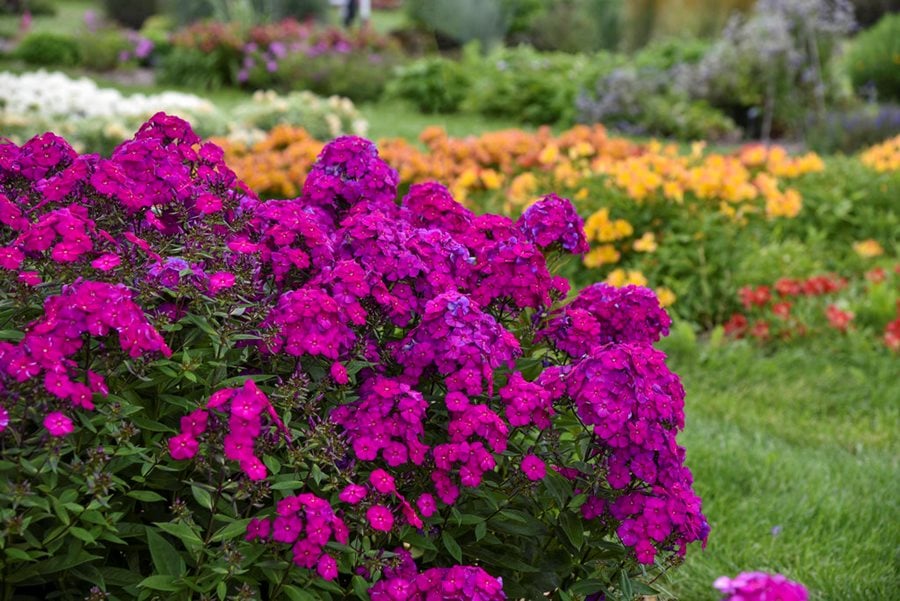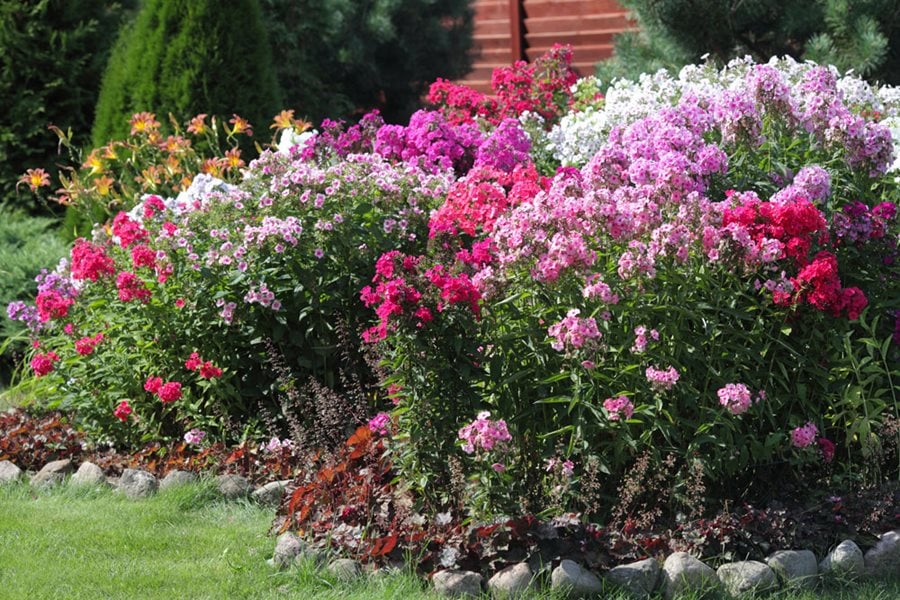The Phlox Plant: A Low-Maintenance yet Vigorous Grower
The phlox plant is a popular choice among gardeners due to its low-maintenance requirements and ability to thrive in various conditions. This perennial flower is known for its vibrant colors, sweet fragrance, and attractive blooms that attract pollinators and add beauty to any garden. Phlox plants are relatively easy to care for, requiring minimal pruning, watering, and fertilization. They can grow in a range of soil types, from well-draining to moist, and can tolerate partial shade to full sun. With proper care, phlox plants can grow up to 3-4 feet tall and 2-3 feet wide, making them an excellent addition to borders, meadows, and containers. Despite their low-maintenance nature, phlox plants can be quite vigorous growers, spreading quickly through underground stolons and producing new shoots. Understanding how much phlox spreads is crucial to maintaining a healthy and thriving garden ecosystem.
How to Contain Phlox Spread: Tips and Tricks
While phlox plants can be a wonderful addition to any garden, their vigorous spreading habits can sometimes get out of control. If left unchecked, phlox can overcrowd other plants, compete for resources, and even become invasive. To prevent this, it’s essential to contain phlox spread and maintain a healthy balance in the garden ecosystem. One effective way to do this is by using physical barriers, such as deep edging or plastic barriers, to restrict the plant’s underground stolons from spreading. Regular pruning is also crucial, as it helps to control the plant’s size and promote bushy growth. Division is another technique that can be used to control phlox spread, by separating and replanting the divided sections in a more controlled manner. By implementing these strategies, gardeners can enjoy the beauty of phlox plants while preventing them from taking over the garden. Understanding how much phlox spreads is key to developing an effective containment plan, and with the right techniques, gardeners can keep their phlox plants healthy, thriving, and under control.
Phlox Varieties: Which Ones Spread the Most?
Phlox plants come in a variety of species, each with its unique characteristics and growth habits. Perennial phlox, such as Phlox paniculata, are known for their tall, upright stems and fragrant flowers. These plants can spread quickly through underground stolons, making them ideal for creating a lush, flowering border. Annual phlox, like Phlox drummondii, are more compact and produce smaller flowers, but they still have a tendency to spread through self-seeding. Creeping phlox, such as Phlox subulata, are low-growing and spreading, making them perfect for rock gardens, slopes, and containers. Among these varieties, creeping phlox is one of the most aggressive spreaders, with some species spreading up to 3 feet in a single growing season. Understanding the specific growth habits of each phlox variety is crucial to managing their spread and creating a balanced garden ecosystem. By choosing the right phlox variety for your garden and implementing proper care and containment strategies, you can enjoy the beauty of phlox while preventing them from taking over. Knowing how much phlox spreads is essential to selecting the right variety for your garden and ensuring a thriving, well-balanced ecosystem.
The Role of Soil and Climate in Phlox Spread
Soil quality, moisture levels, and climate all play a significant role in phlox spread. Phlox plants thrive in well-draining soil with a pH between 6.0 and 7.0. If the soil is too dense or poorly draining, phlox may struggle to spread, while soil with good drainage and aeration can encourage rapid spread. Moisture levels also impact phlox spread, with plants growing more quickly in areas with consistent moisture. However, excessive water can lead to root rot and reduced spread. Climate also influences phlox spread, with warmer temperatures and longer growing seasons promoting more rapid growth and spread. In areas with cooler temperatures and shorter growing seasons, phlox spread may be slower. Understanding how these factors impact phlox spread is crucial to creating an environment that supports healthy growth and controlled spread. By selecting the right soil and climate conditions, gardeners can encourage phlox to spread at a rate that is manageable and beneficial to the garden ecosystem. Knowing how much phlox spreads in different conditions can help gardeners make informed decisions about plant placement and care.
How to Encourage Phlox Spread: A Guide
While phlox plants can spread quickly, there are ways to encourage their spread in a controlled manner. One key factor is soil preparation. Phlox thrives in well-draining soil with a pH between 6.0 and 7.0. Adding organic matter such as compost or manure can improve soil structure and fertility, promoting healthy growth and spread. Watering is also crucial, as phlox plants require consistent moisture to spread effectively. Aim to provide about 1 inch of water per week, either through rainfall or irrigation. Fertilization can also play a role in encouraging phlox spread. A balanced fertilizer applied in the spring can provide the necessary nutrients for healthy growth and spread. Additionally, dividing and replanting phlox every 3-4 years can help to rejuvenate the plant and promote new growth. By following these tips, gardeners can encourage phlox spread in a controlled manner, creating a beautiful and thriving garden ecosystem. Understanding how much phlox spreads and how to encourage its spread can help gardeners make informed decisions about plant placement and care.
Phlox Spread: How Far and How Fast?
One of the most important aspects of phlox plant care is understanding how much phlox spreads and how quickly. On average, phlox plants can spread between 12 and 18 inches per year, with some varieties spreading up to 3 feet or more. Creeping phlox, for example, can spread rapidly, covering large areas in a short amount of time. Perennial phlox, on the other hand, tends to spread more slowly, but can still cover a significant area over time. Annual phlox, as its name suggests, completes its life cycle in a single growing season and does not spread as much as perennial or creeping phlox. Factors such as soil quality, moisture levels, and climate can also influence the spread rate of phlox plants. For instance, phlox plants growing in well-draining soil with consistent moisture may spread more quickly than those growing in poor soil conditions. By understanding how much phlox spreads and how quickly, gardeners can plan their garden layout and care routine accordingly, ensuring a healthy and thriving garden ecosystem.
Managing Phlox Spread in Different Garden Settings
Phlox plants can thrive in various garden settings, including containers, borders, and meadows. However, managing phlox spread in these different settings can be challenging. In containers, for example, phlox plants may need to be pruned regularly to prevent overcrowding and promote healthy growth. In borders, phlox plants may require physical barriers to prevent them from spreading into adjacent plants. In meadows, phlox plants may need to be divided and replanted regularly to maintain a balanced ecosystem. Understanding how much phlox spreads and how to manage its growth in different garden settings is crucial for creating a thriving garden ecosystem. By adapting phlox care to the specific garden setting, gardeners can encourage healthy growth and prevent overcrowding. For instance, in containers, using a well-draining potting mix and providing adequate moisture can help promote healthy growth and prevent root bound. In borders, using a physical barrier such as a plastic or metal edging can help contain phlox spread and prevent it from encroaching on adjacent plants. By understanding the unique challenges of managing phlox spread in different garden settings, gardeners can create a beautiful and thriving garden ecosystem.
Conclusion: Mastering Phlox Spread for a Thriving Garden
In conclusion, understanding how much phlox spreads and how to manage its growth is crucial for creating a healthy and thriving garden ecosystem. By recognizing the importance of containing phlox spread, choosing the right phlox variety, and adapting phlox care to different garden settings, gardeners can promote healthy growth and prevent overcrowding. Remember, phlox plants can spread rapidly, with some varieties covering large areas in a short amount of time. However, with the right techniques and strategies, gardeners can encourage phlox spread in a controlled manner, creating a beautiful and thriving garden. Whether you’re a seasoned gardener or just starting out, mastering phlox spread is key to unlocking the full potential of these stunning plants. By following the tips and guidelines outlined in this article, you’ll be well on your way to creating a phlox-filled garden that’s both beautiful and sustainable.



:max_bytes(150000):strip_icc()/phlox-care-guide-7546245_01_TallPhlox_Phloxpaniculata-be5d05d62e0a4b7e88de3a9488ae8a1d.jpg)
